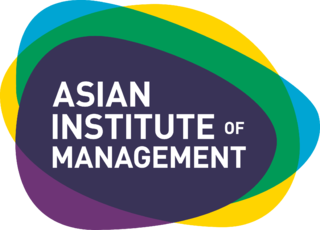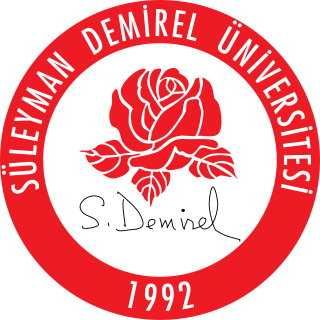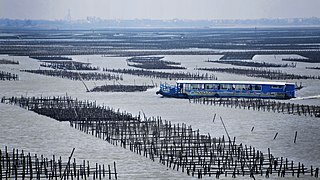
The International Atomic Energy Agency (IAEA) is an international organization that seeks to promote the peaceful use of nuclear energy, and to inhibit its use for any military purpose, including nuclear weapons. The IAEA was established as an autonomous organisation on 29 July 1957. Though established independently of the United Nations through its own international treaty, the IAEA Statute, the IAEA reports to both the United Nations General Assembly and Security Council.

Taiwan, has full diplomatic relations with 14 out of 193 United Nations member states, as well as the Holy See. Historically, the ROC has required its diplomatic allies to recognise it as the sole legitimate government of "China", but since the 1990s, its policy has changed into actively seeking dual recognition with the People's Republic of China. In addition to these relations, the ROC also maintains unofficial relations with 58 UN member states, 1 self-declared state (Somaliland), 3 territories, and the European Union via its representative offices and consulates.

ASEAN, officially the Association of Southeast Asian Nations, is an economic union comprising 10 member states in Southeast Asia, which promotes intergovernmental cooperation and facilitates economic, political, security, military, educational, and sociocultural integration between its members and other countries in Asia. ASEAN's primary objective was to accelerate economic growth and through that social progress and cultural development. A secondary objective was to promote regional peace and stability based on the rule of law and the principle of United Nations charter. With some of the fastest growing economies in the world, ASEAN has broadened its objective beyond the economic and social spheres. In 2003, ASEAN moved along the path of the European Union by agreeing to establish an ASEAN community comprising three pillars: the ASEAN security community, the ASEAN economic community, and the ASEAN socio-cultural community. The ten stalks of rice in the ASEAN flag and insignia represent the ten southeast Asian countries bound together in solidarity.

The Asia-Pacific Economic Cooperation is an inter-governmental forum for 21 member economies in the Pacific Rim that promotes free trade throughout the Asia-Pacific region. Following the success of ASEAN's series of post-ministerial conferences launched in the mid-1980s, APEC started in 1989, in response to the growing interdependence of Asia-Pacific economies and the advent of regional trade blocs in other parts of the world; it aimed to establish new markets for agricultural products and raw materials beyond Europe. Headquartered in Singapore, APEC is recognized as one of the highest-level multilateral blocs and oldest forums in the Asia-Pacific region, and exerts a significant global influence.

The Pacific Community (SPC), formerly the South Pacific Commission, is an international development organisation governed by 26 members, including 22 Pacific island countries and territories. The organisation's headquarters are in Nouméa, New Caledonia, and it has regional offices in Suva, Pohnpei, and Port Vila, as well as field staff in other locations in the Pacific. Its working languages are English and French. It primarily provides technical and scientific advice, and acts as a conduit for funding of development projects from donor nations. Unlike the slightly smaller Pacific Islands Forum, SPC is not a trade bloc, and does not deal with military or security issues.

Auckland University of Technology (AUT) is a university in New Zealand, formed on 1 January 2000 when a former technical college was granted university status. AUT is New Zealand's third largest university in terms of total student enrolment, with approximately 29,100 students enrolled across three campuses in Auckland. It has five faculties, and an additional three specialist locations: AUT Millennium, Warkworth Radio Astronomical Observatory and AUT Centre for Refugee Education.

The International Energy Agency is a Paris-based autonomous intergovernmental organisation established in the framework of the Organisation for Economic Co-operation and Development (OECD) in 1974 in the wake of the 1973 oil crisis. The IEA was initially dedicated to responding to physical disruptions in the supply of oil, as well as serving as an information source on statistics about the international oil market and other energy sectors. It is best known for the publication of its annual World Energy Outlook.

Southern Cross University (SCU) is an Australian public university, with campuses at Lismore and Coffs Harbour in northern New South Wales, and at Coolangatta, the most southern suburb of the Gold Coast in Queensland. It is ranked in the top 100 young universities in the world by the Times Higher Education World University Rankings.
The economy of Asia comprises more than 4.5 billion people living in 49 different nations. Asia is the fastest growing economic region, as well as the largest continental economy by both GDP Nominal and PPP in the world. Moreover, Asia is the site of some of the world's longest modern economic booms, starting from the Japanese economic miracle (1950–1990), Miracle on the Han River (1961–1996) in South Korea, economic boom (1978–2013) in China, Tiger Cub Economies (1990–present) in Indonesia, Malaysia, Thailand, Philippines, and Vietnam, and economic boom in India (1991–present).

The Asian Institute of Management (AIM) is an international management school and research institution. It is one of the few business schools in Asia to be internationally accredited with the Association to Advance Collegiate Schools of Business (AACSB). It was established in partnership with Harvard Business School and uses the Harvard Business School case study teaching methodology. Prof Stephen Fuller of the Harvard Business School was its first President, to be succeeded by another professor from Harvard. It was described by Asiaweek magazine as the best in the Asia-Pacific region in terms of executive education.

Karadeniz Technical University, is a public research university in Trabzon, in the Black Sea Region of Turkey. Established in 1955, it is the fourth oldest university in Turkey. Karadeniz Technical University is a state university institution subject to the Law No. 2547 on Higher Education in Turkey. It is supported mainly by state funds allocated by the Turkish Parliament.

The Institut de Technologie du Cambodge, known for short as Sala Techno, is a higher education institution in Phnom Penh, Cambodia that trains students in science, technology and engineering. Enrollment is approximately 3,500 undergraduate students and 200 graduate students.

Süleyman Demirel University (SDU) is a public university located in Isparta, Turkey. Established in 1992, the university, with around 70.000 students, is the second largest academic institution in Turkey. SDU is known for its programs in agricultural research, medicine, engineering, and business sciences. The university is approved by the Erasmus programme for participation and funding. SDU is a member of European University Association.

Pakistan–Sri Lanka relations refer to bilateral relations between Pakistan and Sri Lanka. Both countries are located in South Asia. The earliest proper diplomatic and trade contacts between Pakistan and Sri Lanka date back as early as 1948. In the past, Pakistan assisted the Government of Sri Lanka in supplying High-Tech military equipment to the Sri Lankan army in the civil war against the Liberation Tigers of Tamil Eelam. The relationship also fosters on strong mutual Sino-Pakistan and Sino-Sri Lankan relationship, as China maintains strong mutual interest in the economic and military development of Sri Lanka and Pakistan. Both Pakistan and Sri Lanka are also members of SAARC. Relations which are generally warm have gone into strong tie recently.

The Comprehensive and Progressive Agreement for Trans-Pacific Partnership (CPTPP), also known as TPP11 or TPP-11, is a trade agreement among Australia, Brunei, Canada, Chile, Japan, Malaysia, Mexico, New Zealand, Peru, Singapore, and Vietnam. It evolved from the Trans-Pacific Partnership (TPP), which never entered into force due to the withdrawal of the United States. The eleven signatories have combined economies representing 13.4 percent of global gross domestic product, at approximately US$13.5 trillion, making the CPTPP one of the world's largest free-trade areas by GDP, along with the United States–Mexico–Canada Agreement, the European Single Market, and the Regional Comprehensive Economic Partnership.
UBAKUSAT is a Turkish nanosatellite that was developed by Istanbul Technical University. It was launched into space on board a Falcon-9 rocket in April 2018 and was deployed into its orbit from the International Space Station in May 2018. It was built as a technology demonstration and earth observation satellite to provide voice communications for amateur radio stations around the world. It carries an experimental card, TAMSAT Simplesat, which is allowing scientists to test its accuracy of measuring radiation from space. It is the fifth satellite to be built by students of Istanbul Technical University.

The maritime industries of Taiwan are a large part of Taiwan's economy. Industries of particular importance are shipbuilding, boat building, maritime transport, aquaculture, mariculture, commercial fishing, seafood processing, offshore wind power and various forms of tourism. Deep sea mining, especially of dormant hydrothermal vents, is also being considered for the future. In 2018 Taiwan was the fourth largest yacht building nation. Taiwan is home to a number of maritime museums and maritime colleges.

Rice production in Myanmar accounts for approximately 43% of total agricultural production in the country, making it the seventh largest producer of rice in the world. Out of 67.6 million hectares of land, 12.8 million are used for cultivation. In 2019 alone, Myanmar accounted for 13,300 million metric tons of milled rice production.

Aquaculture has a long history in Taiwan and is an important component of the Maritime industries of Taiwan.

















